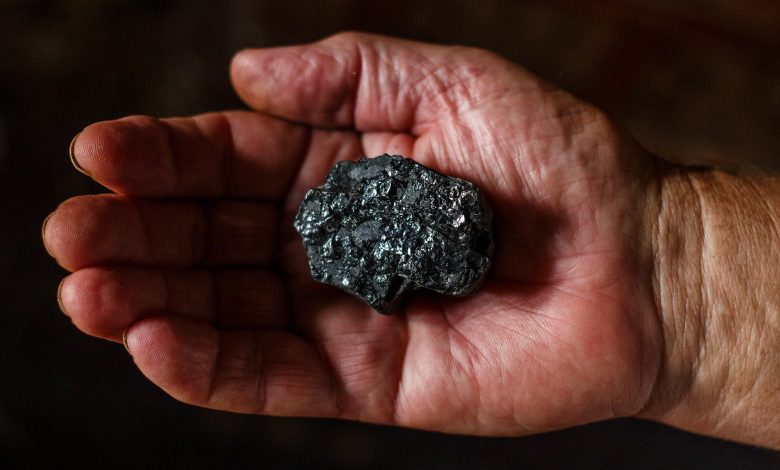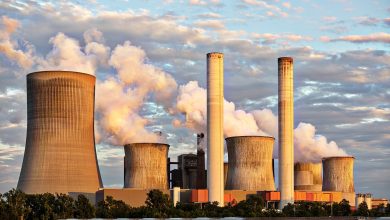How the Coal Mining Industry Has Become Safer Today

The coal mining industry is one that comes with plenty of safety risks, which is why the issue of safety is an important topic that must be discussed. Over the years, experts in the industry have pioneered various methods, tools, and equipment that contribute to making coal mining a safer activity. Zero fatality is the goal, and while this may seem like a far-fetched dream, we are definitely closer to it than we were decades ago.
Coal mining, along with agriculture, is an industry that feeds all the other manufacturing and service industries. Its importance in the sustenance of our society is unmatched, which means that it is that much more crucial that we make coal mining a safer activity for all those involved.
Underground coal mining especially poses a higher safety risk when compared to coal mined in opencast pits. This can be attributed mainly to problems associated with mine ventilation, as well as the risk of a mine collapse. On top of this, the heavy machinery that is used in coal excavation also poses a serious safety risk.
Today, coal mines follow rigorous safety procedures, high standards for health and safety, and also make sure that each worker receives proper education and training. These, among various other steps, have helped in making significant improvements in the safety of underground and opencast mining.
Besides, the World Coal Association (WCA), which represents the global coal industry, is devoted to improving safety levels, and this has helped make significant changes in the industry. They have worked tirelessly towards ensuring the safety of workers, which they believe should be the primary consideration of the industry. Their “Commitment to Safety” policy statement outlines the critical importance the coal industry places on operational safety. To provide safe workplaces for coal miners, the WCA has four components, which are:
- Implementation of a risk management culture
The WCA believes that implementing a culture of risk management across the entire industry is critical to reducing the risk of incidents. This includes identification of hazards, undertaking accurate risk assessments thoroughly, and implementing controls.
- Working in partnership with everyone in the industry
The WCA is committed to the empowerment of all workers in the coal mining industry at all levels. It encourages them to share their concerns, and they are always open to suggestions for improved performance.
- Safety is everyone’s responsibility
The WCA believes that everyone has to play their part to create safer workplaces in the coal mining industry. Everyone involved in the different aspects of operations, including field workers and miners, managers, executives, and partners, all have to carry out their roles.
- Safety and health can always be improved
The WCA is constantly striving to create safer workplaces for all those involved in all kinds of coal mining activities. New ideas for improving safety can always be applied, and every mistake is seen as a learning opportunity.

The Role of Technology in Coal Mining Safety
With advancements in technology, safety in the coal mining industry has improved greatly. Not only this, there is always scope for more innovation and improvements as well. Experts in the industry have made use of all kinds of modern tools, equipment, devices, and gadgets to boost coal mining safety. Below, we take a look at the different ways in which technology has revolutionized safety in coal mining, including both underground and opencast mining.
- Wireless underground communication
Today, mobile leaky-feeder communication systems are available, and many miners have replaced their hard-wired pagers for this. These are wireless handheld radios, which are provided to every worker, thus allowing them to communicate with their coworkers underground. Not only does this improve safety and efficiency, but it also allows the miners and equipment to be located quickly in case of any incidents. Wireless underground communication and tracking technology such as these are crucial for improved safety.
- Drones for improving mine safety
Major players in the mining industry are already using drones to improve mine safety. With drone technology, steeper pit slope angles in mines are created, which, in turn, reduces the stripping ratio, as well as the amount of waste rock hauled before the extraction of ore. Apart from scanning mines from perspectives that are inaccessible and dangerous for humans, these drones also communicate any information they pick up in real-time to humans. This allows for more rapid and detailed analysis of the mine slopes without the need for humans doing the same work in hazardous environments.
With machines becoming more intelligent and being able to operate without much manual intervention, the future for safe and automated coal mining operations where humans aren’t at risk doesn’t seem so far away. This doesn’t mean that human employees won’t be required. They will still be needed to control the machines and make sure operations run smoothly.
- Automation for improved underground safety
The thing with human workers is that there is much more room for errors as compared to machines doing the work. Errors often lead to accidents, which, in turn, compromises the safety of the mineworkers. With automation, not only are there fewer chances of error, but there are fewer human lives at risk.
Considering the current technology available at our disposal, the biggest opportunity for automation in mines in the near future is self-driving vehicles. These can help boost productivity while also contributing to mine safety.
Automated machinery can be used not only for coal mining operations, but for rescues too. Rescue operations in mining incidents can be made much more efficient with automated tools and equipment. Several companies are already using robots and other automated machines for mining operations and rescues.
The coal mining industry is working towards making automation more commonplace, as many major players are investing in remote, wireless technology that allows remote controls. This enables individuals to stay out of harm’s way while still being able to carry out important work.
- Smart helmets
Many companies are working on developing wearable technology for miners to improve safety. One of those is a smart helmet that is being developed by a Spain-based company, Presistem. The smart helmet, called Angelhelmet, has the ability to monitor air quality constantly. Among other functions, it can also monitor the movement of people around you and your position with GPS coordinates. In case of an emergency, the smart helmet is programmed to relay a warning signal, or it can connect you with someone above-ground using its hands-free call feature.
Other companies, like Deloitte, are also working on developing their own smart helmets. Deloitte’s helmet has a red light/green light communication device, and can also detect toxic gases and radiation using special sensors.
Additionally, students at the Datta Meghe Institute of Engineering, Technology & Research, in Pune, India, have come up with a smart helmet that can detect smoke and has an LCD that sounds an alarm in case of a gas leak or a fire.
- Data for improving mine safety
Leaky-feeder devices can be used for collecting atmospheric monitoring information, which is then sent to mine managers so that they can have access to vital safety data. One of the most important uses of such data is looking at the airflow in underground mines.
It is of utmost importance that underground mining operations have proper ventilation so that air can keep flowing throughout the mines. The leaky-feeder devices allow the mine managers to check the amount of airflow in particular areas of the mines, thus ensuring that workers always have enough air even when working underground. Since such data is recorded, they can even go back and look at the history to have a better understanding of the airflow in their mines.

- Reduction in methane explosions
Mining explosions are another safety risk that comes with underground mining. During the process of mining, methane is released from the coal seam and surrounding rock strata. This can present a high risk of explosion at concentrations in air of 5 to 15 percent. In recent years, scientists have developed techniques to eliminate or dilute methane emissions before and during the mining process. This has contributed significantly to the reduction of methane explosions in underground mines.
- Self-contained rescuers
Self-contained rescuers, also known as SCSR, help miners breathe in case they become trapped underground or if poisonous gases are released into the mine-shafts they work in. These are portable devices that can supply oxygen to provide access to breathable air to those in need.
The standard SCSR comes with an oxygen scrubber, which is used for chemically removing impurities from the atmosphere. This, in turn, provides clean, breathable oxygen to miners in need. For more specialized operations, suppliers can also provide an oxygen-producing unit, which comes with a small oxygen-filled tank that a miner can immediately access. Although rarer in metal/nonmetal mines, such devices are becoming more widespread.
Since a huge portion of significant mining accidents occur as a result of lack of oxygen or the presence of poisonous gases, self-contained rescuers can prove to be extremely useful in preventing mining incidents.
- Switching from wire to synthetic rope
Wire rope is commonly used in mining activities, but they pose the risk of breaking. When wire ropes break, the surrounding areas, as well as the people, are at risk, which means that a safer alternative would be ideal. The recoil properties of synthetic rope are more predictable, and it is also much lighter than wire rope. So not only is it safer, but the chances of strain and sprain injuries when handling it are also lower.
- Implementing systems in place to avoid collisions underground
Another common reason for underground mining incidents is collisions involving heavy vehicles. By installing proximity detection devices, this risk can be lowered. Such devices can sound an alarm when a large piece of equipment gets too close to another, thus preventing collisions and injuries to miners.
For instance, large trucks with such systems installed would have screens, while smaller pieces of equipment or personnel would have tags installed on them. These allow the monitor to see where they are. So even without seeing the large piece of equipment, they can be alerted when two pieces of equipment are too close to each other. These tags can be put on anything, which makes such systems easy to install and use.
On the surface of mines, satellite tracking technology can be used to avoid collisions between equipment and vehicles.
- Worksite simulators
Regardless of what you are mining, the experience is one of the most important factors that determine safety and security in underground mines. Whether you are mining coal, platinum, or iron ore, training before you start your job is essential. For many years, on-site training was the only option, but this came with a high risk as untrained miners were out in the field. Today, thanks to technological advancements, worksite simulators can be used for the safe training of miners.
For example, Immersive Technologies offers Zero-Harm training service, which allows truck drivers to train themselves for a wide range of mining emergencies in a completely safe environment that looks and feels like a real work site, but where no real harm can befall. Such types of training can result in improving efficiency and productivity, while also preventing many accidents and injuries.
- Radio-frequency identification
For many years, a headcount was the only way to account for miners. It’s not difficult to understand how this method takes time and is not always reliable. Another tech-related option is to use remote communication tools, but since cell reception is difficult to get when you are hundreds of feet below the earth, these are not very reliable either.
Fortunately, research has shown that RFID technology can be used for locating and accounting for miners underground. Researchers from Wright State University and Linyi Mining Group have shown that an RFID system can be used to pinpoint in real-time where a miner is underground, trace the movements of the miner, and also generate attendance reports for safety performance record-keeping.
Mineworkers can be tagged using inexpensive, durable, and lightweight tags, which allow their movements to be tracked by well-placed RFIDs. Not only this, but they can also be linked with air quality sensors and controlled explosion schedules, meaning that any miner can be quickly identified, contacted, and removed from hazardous situations.

Just How Dangerous is the Coal Mining Industry?
The coal mining industry is often seen as one of the most hazardous. Underground coal mining, especially, is considered to pose many risks to the health and safety of workers. But just how true are these beliefs? Is coal mining that dangerous when compared to other professions and industries?
According to the 2016 statistics of the Mine Safety and Health Administration, there was a 3.3 percent chance that a coal miner would be injured during that year. It is important to compare this to the numbers from other industries to gain a better, clearer understanding.
Workers in amusement and theme parks had a 6 percent chance of getting injured, while construction was at 8.2 percent. Hospital workers had a 7.8 percent chance of injuries in 2016, while the number for agriculture, forestry, fishing, and hunting was 5.7 percent. These statistics are taken from a report by the Occupational Safety and Health Administration.
So in context to other industries, you can see that the coal mining industry poses a relatively low chance of injury today. However, this can be attributed to the tremendous amount of attention that the industry places in safety procedures and measurements, and not simply because the industry and the nature of work itself are safe. Rather, because of the risks associated, safety and preventive measurements are a priority, which, in turn, reduces the risk of injury.

Is Zero-Harm Coal Mining a Possible Reality?
Initially, Zero-Harm performance in coal mining was seen as something that our technology did not have the potential for. It was considered unrealistic, and many experts even met the concept with a lot of skepticism. Considering the rate of accidents, injuries, and mortality, it was widely believed that the coal mining industry, especially underground mining, was too inherently hazardous to achieve Zero-Harm performance. Not only this, it was considered near impossible to shift the perception of the industry itself.
However, today, with advancements in science and technology, new perspectives and performances within the industry, and also from other mining sectors, are slowly changing the dynamics of the mining industry. As a result, the number of industry participants who believe that Zero-Harm is a possibility in the future is increasing year after year. In other words, Zero-Harm is now seen by many as a practical concept, and important variables are currently being addressed to set new standards in the coal mining industry, and ultimately achieve these standards.
To achieve Zero-Harm in coal mining, various ongoing technical challenges, including ventilation, gas and dust control, ground control, and equipment management, among others, need to be improved. Moreover, socio-technical issues such as human error, systems, organizational culture, leadership, and learning need to be worked on as well. Changing the perception of industry stakeholders on safety, performance, and risk is equally important as optimizing coal mine operations.



